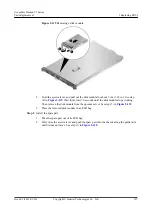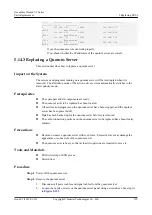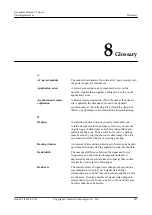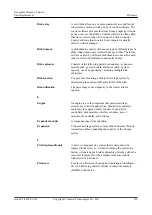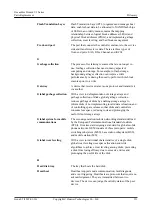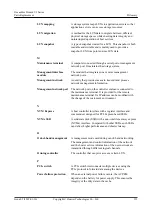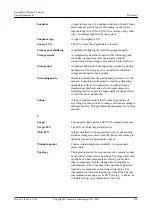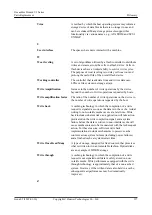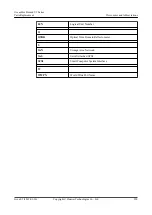
Disk array
A set of disks from one or more commonly accessible disk
subsystems, combined with a body of control software. The
control software presents the disks' storage capacity to hosts
as one or more virtual disks. Control software is often called
firmware or microcode when it runs in a disk controller.
Control software that runs in a host computer is usually
called a volume manager.
Disk domain
A disk domain consists of the same type or different types of
disks. Disk domains are isolated from each other. Therefore,
services carried by different disk domains do not affect each
other in terms of performance and faults (if any).
Disk enclosure
Consists of the following parts in redundancy: expansion
module, disk, power module, and fan module. System
capacity can be expanded by cascading multiple disk
enclosures.
Disk location
The process of locating a disk in the storage system by
determining the enclosure ID and slot ID of the disk.
Disk utilization
The percentage of used capacity in the total available
capacity.
E
Engine
An engine is a core component that provides storage
services for external applications. Hosted in a controller
enclosure, the engine usually consists of one pair of
controllers, disk modules, interface modules, power
modules, fan modules, and batteries.
Expander module
A component used for expanding.
Expansion
Connects a storage system to more disk enclosures through
connection cables, expanding the capacity of the storage
system.
F
Field replaceable unit
A unit or component of a system that is designed to be
replaced in the field, i.e., without returning the system to a
factory or repair depot. Field replaceable units may either be
customer-replaceable or their replacement may require
trained service personnel.
Firmware
Low-level software for booting and operating an intelligent
device. Firmware generally resides in read-only memory
(ROM) on the device.
OceanStor Dorado V3 Series
Parts Replacement
8 Glossary
Issue 05 (2019-01-30)
Copyright © Huawei Technologies Co., Ltd.
210


